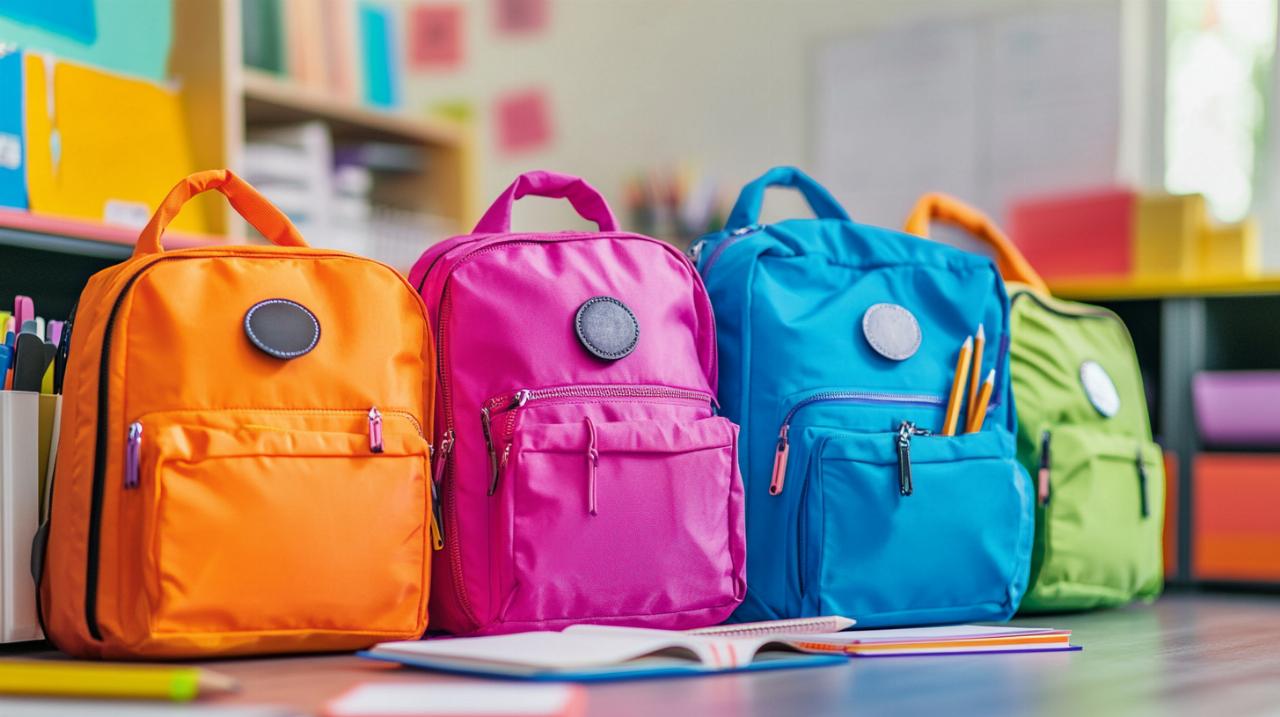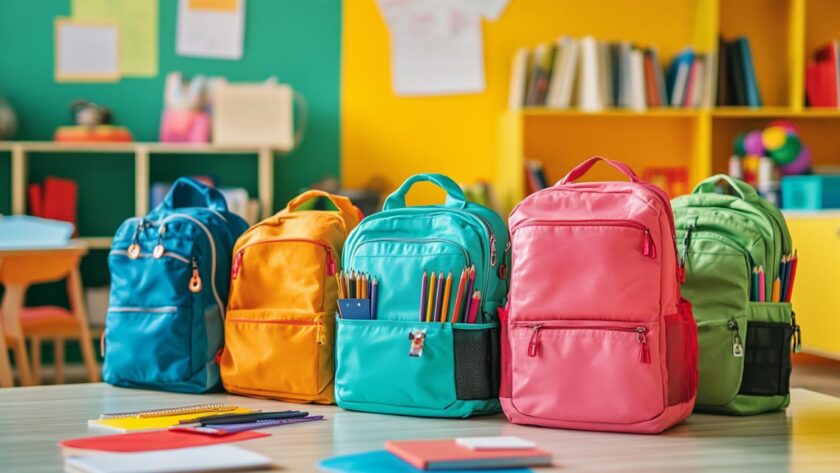As the new school year approaches, parents across the country are faced with the perennial question of how to best equip their youngsters for the months ahead. While traditional rucksacks have long been the go-to option, the rising weight of textbooks, laptops, and school kit has led many families to consider alternatives that prioritise both practicality and health. Rolling backpacks have emerged as a popular solution, offering a way to transport heavy loads without placing undue strain on developing spines and shoulders. Selecting the best rolling backpacks for back to school involves weighing a variety of factors, from size and durability to comfort and style, ensuring that the chosen bag will serve your child well throughout the academic year.
Size, Capacity, and Practicality: Getting the Basics Right
Assessing Your Storage Needs for Textbooks and School Kit
The first consideration when choosing a rolling backpack is understanding exactly what it needs to carry. Modern students often lug around an impressive array of items, from hefty textbooks and notebooks to laptops, lunchboxes, and sports equipment. It is essential to select a bag with sufficient capacity to accommodate all these necessities without becoming overstuffed or unwieldy. For younger children in primary school, a bag measuring between 35 and 45 centimetres in height is generally appropriate, whilst secondary school pupils may require something taller, often exceeding 45 centimetres. The capacity should allow for organised storage, with enough room to keep items secure and easily accessible. Many rolling backpacks offer capacities of up to 45 litres, which can comfortably hold the demands of a full school day. When assessing your storage needs, consider not only the immediate requirements but also any future additions, such as extracurricular materials or seasonal items like jackets and scarves. A well-chosen bag will grow with your child, adapting to the evolving demands of their education and activities.
Choosing the Proper Size Based on Your Child’s Height
Matching the size of the backpack to your child’s height is crucial for both comfort and practicality. A bag that is too large can be difficult to manoeuvre, particularly in crowded corridors or on public transport, whilst one that is too small may not provide adequate storage. For toddlers and preschoolers aged two to four, bags should measure between 20 and 31 centimetres in height, ensuring they are neither cumbersome nor overwhelming. Primary school children benefit from bags in the 35 to 45 centimetre range, which strike a balance between capacity and ease of use. Secondary school students, who typically carry more substantial loads, often require bags taller than 45 centimetres. Beyond height, the weight of the bag itself is an important consideration. Experts recommend that a fully loaded backpack should not exceed 10 to 15 per cent of a child’s body weight, with primary school bags ideally weighing no more than three kilograms when full and secondary school bags capping at around five kilograms. These guidelines help prevent strain on the musculoskeletal system, reducing the risk of back pain, slouching, and poor posture. When selecting a rolling backpack, ensure that the dimensions and weight align with your child’s physical capabilities, promoting a healthy and comfortable carrying experience.
Quality and Durability: What to Look for in Wheels and Handles
Inspecting Wheel Quality for Smooth Rolling and Longevity
The wheels of a rolling backpack are arguably its most critical component, as they bear the brunt of daily use and must withstand a variety of surfaces, from smooth school hallways to rough pavements. High-quality wheels ensure smooth rolling, making it easier for children to transport their belongings without excessive effort or frustration. Look for wheels that are at least 75 millimetres in diameter, as larger wheels tend to roll more smoothly over uneven terrain and are less prone to jamming or breaking. Some models feature six wheels rather than the standard two or four, which can offer enhanced stability and manoeuvrability, particularly for younger children who may struggle with balance. Durability is paramount, so check that the wheels are made from robust materials such as hard-wearing rubber or polyurethane, which can endure repeated use without cracking or wearing down. Regular maintenance, such as removing debris and applying a light oil to the axles once a year, can extend the lifespan of the wheels significantly. Additionally, some backpacks come with wheel covers or built-in protectors, which help prevent damage when the bag is being carried on the back rather than rolled. Investing in a backpack with high-quality wheels ensures that the bag will remain functional throughout the school year, providing reliable support for your child’s daily commute.
Checking handle sturdiness and adjustability
Equally important to the wheels is the handle, which must be both sturdy and adjustable to accommodate your child’s growing height. A well-designed handle should extend smoothly and lock securely at various heights, allowing the backpack to be pulled comfortably without forcing the child to stoop or stretch awkwardly. Handles that are too short can lead to poor posture and discomfort, whilst those that are too long may be difficult to control. Many quality rolling backpacks feature telescopic handles with multiple locking positions, offering flexibility as your child grows. The handle should be made from durable materials, such as reinforced plastic or lightweight metal, capable of withstanding the daily wear and tear of being extended, retracted, and pulled across various surfaces. Test the handle’s mechanism before purchasing, ensuring that it moves smoothly and locks firmly in place without wobbling or slipping. Some models also include padded grips, which provide additional comfort for small hands and reduce the risk of blisters or discomfort during longer journeys. A detachable trolley system is another feature worth considering, as it allows the backpack to be used as a traditional rucksack when needed, offering versatility for different situations such as navigating stairs or crowded spaces. By prioritising handle sturdiness and adjustability, you can ensure that your child’s rolling backpack remains comfortable and practical for years to come.
Comfort features: ensuring a pleasant carrying experience
Evaluating shoulder straps and padded back support
Whilst rolling backpacks are primarily designed to be pulled along on wheels, there will inevitably be times when your child needs to carry the bag on their back, such as when climbing stairs or traversing areas where rolling is impractical. For these occasions, the quality of the shoulder straps and back support becomes paramount. Look for backpacks with wide, padded shoulder straps that distribute weight evenly across the shoulders, reducing the risk of strain or discomfort. Straps should be adjustable, allowing for a customised fit that keeps the bag snug against the back without pulling or digging into the skin. Padded back panels provide additional comfort and support, cushioning the spine and preventing the hard edges of books or other items from pressing uncomfortably against the body. Some rolling backpacks feature breathable mesh panelling on the back, which helps to reduce perspiration and keep your child cool during the school day. Chiropractors, including experts such as Dr Jeffrey Neumann, recommend rolling backpacks for students with low muscle tone or physical differences, as they alleviate stress on the musculoskeletal system. However, even for children without such concerns, the option to carry the bag comfortably on the back is a valuable feature that enhances versatility and convenience. By evaluating the quality of shoulder straps and padded back support, you can ensure that your child’s backpack is as comfortable to carry as it is to roll.
Balancing weight distribution to prevent strain
Proper weight distribution is key to preventing strain and promoting healthy posture, whether the backpack is being rolled or carried. When a bag is overfilled or poorly organised, the weight can shift unevenly, making it difficult to pull smoothly or causing discomfort when worn on the back. To achieve optimal weight distribution, choose a rolling backpack with multiple compartments and pockets, which allow for the strategic placement of heavier items, such as textbooks and laptops, close to the wheels or centre of the bag. This helps to maintain balance and reduce the effort required to pull the bag along. When the backpack is carried on the shoulders, the weight should rest evenly across both sides of the body, with heavier items positioned near the back panel to keep the load close to the spine. Avoid overloading the bag beyond the recommended weight guidelines, as this can negate the benefits of even the best-designed backpack. Encourage your child to regularly assess what they are carrying and to remove any unnecessary items, keeping the load as light as possible. Some rolling backpacks also feature tuckaway shoulder straps, which can be stowed away when the bag is being rolled, preventing them from dragging on the ground or getting caught in the wheels. By prioritising balanced weight distribution, you can help protect your child’s health and ensure that their backpack remains manageable and comfortable throughout the school day.
Organisation and Storage Solutions for Keeping Things Shipshape
Finding Rucksacks with Multiple Compartments and Pockets
A well-organised backpack can make all the difference in helping your child stay on top of their schoolwork and extracurricular activities. Rolling backpacks with multiple compartments and pockets provide dedicated spaces for different types of items, making it easier to locate books, stationery, lunchboxes, and personal belongings without having to rummage through a jumbled mess. Look for bags that feature a main compartment large enough to hold textbooks and folders, alongside smaller pockets for items such as pencils, calculators, and mobile phones. Many rolling backpacks also include a padded laptop compartment, which offers protection for electronic devices and keeps them separate from other items that could cause damage. External pockets are particularly useful for storing items that need to be accessed quickly, such as water bottles, snacks, or travel cards. Some models even include insulated compartments or detachable lunch bags, ensuring that food stays fresh throughout the day. A thoughtfully designed backpack with ample storage options not only keeps things shipshape but also teaches children valuable organisational skills that will serve them well beyond the school years. When assessing a rolling backpack, consider the layout of the compartments and whether they align with your child’s specific needs, ensuring that the bag will support their daily routine effectively.
Prioritising easy access and tidy storage options
Beyond the number of compartments, the ease of access and the quality of the fastenings are crucial factors in maintaining a tidy and functional backpack. Zippers should be sturdy and smooth-operating, capable of withstanding frequent opening and closing without jamming or breaking. Some rolling backpacks feature front-loading designs, which unzip fully like a suitcase, allowing for easy access to all contents without having to dig through layers of items. This style of access is particularly useful for older students who may need to quickly swap out books or retrieve homework assignments. For younger children, top-loading designs with wide openings can also be effective, provided there are sufficient internal pockets to keep items organised. Velcro or magnetic closures on smaller pockets offer quick access, though they may wear out more quickly than zippers, so it is worth checking the quality of these fastenings before making a purchase. Tidy storage options, such as elasticated straps or dividers within the main compartment, can help keep items secure and prevent them from shifting around during transport. Encouraging your child to regularly tidy their backpack, removing rubbish and reorganising contents, will help maintain the bag’s functionality and prolong its lifespan. By prioritising easy access and tidy storage options, you can ensure that your child’s rolling backpack remains a practical and efficient tool for their school day.
Style meets function: picking a design your child will love
Choosing Colours and Patterns That Appeal to Your Youngster
Whilst functionality is paramount, the aesthetic appeal of a rolling backpack should not be overlooked, as children are far more likely to take care of a bag they genuinely like. Fortunately, the market offers an impressive array of designs, from bold, vibrant patterns to more subdued, classic styles, ensuring that there is something to suit every taste. Younger children may be drawn to backpacks featuring their favourite cartoon characters or bright, playful prints, whilst older students often prefer sleek, unisex designs in neutral tones such as black, navy, or grey. Some brands offer personalised options, allowing you to add your child’s name or initials, which can help prevent mix-ups at school and make the bag feel uniquely theirs. When selecting a design, involve your child in the decision-making process, as their enthusiasm for the backpack can translate into better care and a greater sense of responsibility for their belongings. However, it is also worth considering the longevity of the chosen design, particularly for older children who may outgrow overly childish patterns quickly. A versatile, timeless design can serve your child well across multiple school years, reducing the need for frequent replacements. By choosing colours and patterns that appeal to your youngster, you can strike a balance between style and practicality, ensuring that the backpack is both functional and a source of pride.
Considering easy-to-clean materials and practical features
Beyond aesthetics, the materials used in a rolling backpack play a significant role in its durability and ease of maintenance. Polyester is a popular choice for school bags, as it is both strong and lightweight, offering excellent resistance to wear and tear. Waterproof or water-resistant materials are highly recommended, as they protect the contents from rain and spills, ensuring that books, electronics, and other items remain dry and undamaged. Some backpacks come with waterproof covers that can be deployed in inclement weather, providing an extra layer of protection. When it comes to cleaning, bags made from polyester or similar synthetic fabrics can typically be wiped down with a damp cloth and mild soap, making it easy to remove dirt and stains. Regular cleaning is important to keep the bag looking fresh and to prevent the build-up of grime, particularly on the wheels and base, which are in constant contact with the ground. Once a month, empty the backpack completely and give it a thorough wipe-down, allowing it to air dry in a well-ventilated area away from direct sunlight. Practical features such as reflective strips or panels can also enhance safety, making your child more visible to motorists during darker mornings and evenings. By considering easy-to-clean materials and practical features, you can ensure that the rolling backpack remains in excellent condition throughout the school year, providing reliable service and value for money.
Reading reviews and researching performance before you buy
Understanding real user experiences with durability
Before committing to a purchase, it is wise to spend some time reading reviews and researching the performance of different rolling backpacks. Real user experiences can provide invaluable insights into the durability and reliability of a bag, highlighting strengths and potential weaknesses that may not be immediately apparent from product descriptions alone. Look for reviews from parents whose children have used the backpack for an extended period, as these will offer the most accurate picture of how the bag holds up under daily use. Pay particular attention to comments about the quality of the wheels, handles, zippers, and stitching, as these are the components most likely to suffer from wear and tear. A backpack with consistently high ratings across multiple platforms, such as a score of 4.5 or higher out of five, is generally a safe bet. For example, models such as the Matein 17-inch Rolling Backpack have garnered over four thousand positive ratings on Amazon, with a score of 4.6 out of five, indicating strong customer satisfaction. Similarly, the J World New York Sundance Rolling Backpack boasts over seven thousand ratings, with a score of 4.2 out of five, suggesting reliable performance across a broad range of users. By taking the time to read reviews and understand real user experiences with durability, you can make a more informed decision and select a rolling backpack that will stand the test of time.

Sussing Out Overall Performance and Value for Money
In addition to durability, it is important to assess the overall performance and value for money offered by a rolling backpack. This involves considering not only the upfront cost but also the bag’s functionality, longevity, and the extent to which it meets your child’s needs. Budget-friendly options, such as the Rockland Double Handle Rolling Backpack, which retails for around 31 pounds and has over 7,800 ratings with a score of 4.2 out of five, can offer excellent value without compromising on quality. At the other end of the spectrum, premium models such as the JanSport Driver 8 Rolling Backpack, priced at approximately 144 pounds, may come with additional features such as tuckaway shoulder straps and highly durable construction, justifying the higher investment for families seeking a long-term solution. When sussing out performance, consider factors such as ease of use, comfort, organisational features, and the overall design, weighing these against the price to determine whether the backpack offers good value. Some models, such as the Oiwas Travel Rolling Backpack, which retails for around 59 pounds and features suitcase-style access with a rating of 4.5 out of five, strike a balance between affordability and functionality, making them a popular choice among parents. It is also worth considering the warranty or return policy offered by the retailer, as this can provide additional peace of mind in case the backpack does not meet expectations. By thoroughly researching overall performance and value for money, you can ensure that your investment in a rolling backpack is a sound one, providing your child with a reliable and practical tool for their school days ahead.




